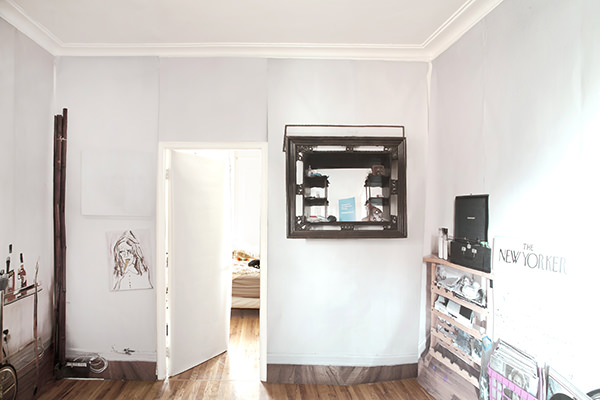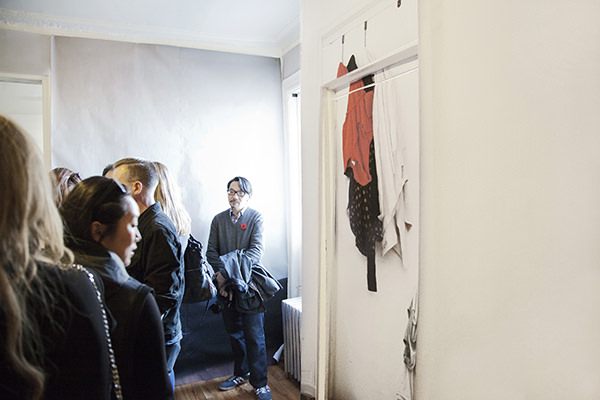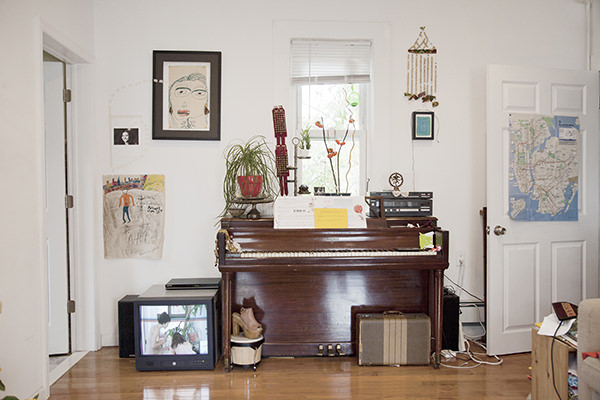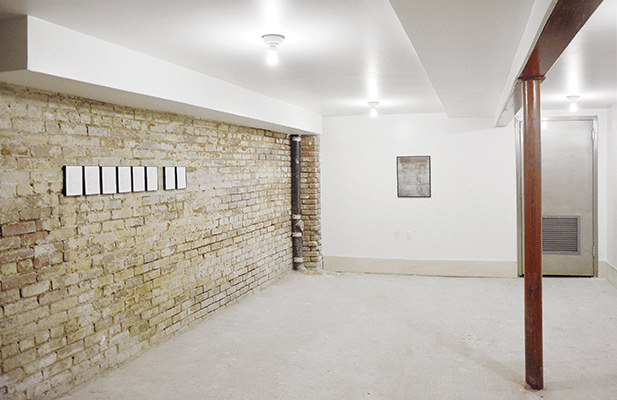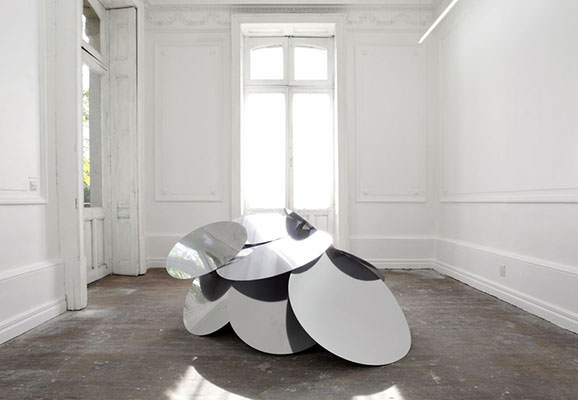From 2016 until 2019, Random Institute ran the curatorial program of the international contemporary art center Despacio in San José, Costa Rica.
This site was coded by Sarvesh Dwivedi and Emmanouil Zoumpoulakis and designed by Sandino Scheidegger.
Don't Talk to Strangers
We playfully confound two typically distinct spaces—the gallery & the domestic home—as artists present their work in the households of participating NY residents. In each dwelling, an installation area is designated, while the existing items (i.e. sofas, coffee tables, books, and personal objects) are moved and reinstalled in a gallery space.
With the artworks thus displaced, gallery visitors must directly contact the private hosts, whose phone numbers are available alongside their displayed belongings.
ThoughtsThoughts
Participating artists are Thomas Moor (Switzerland), Karyn Olivier (Trinidad & Tobago), and Linda Tegg (Australia). Open daily from 12pm to 6pm. Friday night until 10pm. Download Dossier
The art world disrupts the private sphere and vice versa
Visiting another’s home leaves a lasting impression. From the authors on the bookshelves to the contents of the refrigerator, a personal dwelling offers almost imperceptible information about one’s life. Much the same, the artistic qualities of memories made in such a home correlate to the environment in which they occurred. This is a pivotal facet of Don’t Talk to Strangers, which atomizes preconceived notions of the gallery proper by casting a peculiar hue on the entrancing properties of that which we cannot live without: art.
Overlap of Public and Private Space
In this reappropriation of an exhibition, artists present installations in the households of participating Bushwick residents, rather than in the Fresh Window Gallery. Curators work closely with each dwelling’s artist to designate an installation area from which all existing items are relocated and installed at the gallery space.
Once the exchange is complete, viewers are invited to contact private hosts, whose phone numbers are available alongside their displayed belongings, to ascertain operation hours of their newly appropriated “home gallery.”
A Far More Personal Experience
By design, Don’t Talk to Strangers challenges viewers’ expectations and impishly suggests an alternative experience that is far more intimate than typical art viewings in gallery settings. While Fresh Window Gallery visitors are initially denied access to the work they desire, they find reciprocity in elite-access at the cost of their time.
This inventive model encourages a deeper level of participation by diverting the impulse to passively consume. If the viewer takes full advantage, each visit to Fresh Window Gallery offers another phone number, another unique experience, and another opportunity for adventure.
The heightened sense of participation, contacting hosts and making appointments, results in a heightened sense of investment. In this way, Don’t Talk to Strangers reaches beyond an exhibition. Viewers searching for a contemporary art fix will be challenged to pursue a pilgrimage in the name of art, allowing exploration to play a role in their eventual experience of the work.
Consequently, the initial disappointment from lack of artwork becomes a chance to discover far more than the artwork itself.
Polyphonic Roles of Host and Viewers
Meanwhile, the host wears many hats—fellow man, homeowner, art expert, guide, and institution. By welcoming viewers into their home, they also welcome the possibility of new perspectives and interpretations of the artwork at hand.
Though the newly-formed relationship between host and viewer may end post-viewing, while together, both parties are of one ambition: to let art happen outside of the institutionalized art world, as well as to rediscover their autonomy as art viewers and enthusiasts.
Such a circumstance, however, also forces the host into a position of influence, just as any art institution influences its patrons. As a result, the host’s life story is on display like the art in their home. This creates a more personal system for viewing contemporary works: an intimate environment that will no doubt lend itself to a fond and vivid memory in the archive of the viewer’s life.
Random Institute entreats its audience to bask in the unknown and to reap the reward of memories, knowledge, and experience. The home of a stranger offers the perfect setting, the grand stage from which a narrative will naturally emerge amongst the trio of host, viewer, and artwork. This narrative becomes both a tale closely linked to the home and, quite possibly, an inseparable part of the artwork displayed in Don’t Talk to Strangers.
InformationInformation
The exhibition ran from October 23rd to 26th, 2014 and took place at Fresh Window Gallery, 56 Bogart Street, Brooklyn.
The second edition of Don’t Talk to Strangers took place in Zurich, Switzerland.




